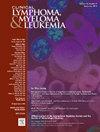加强多发性骨髓瘤护理:在学术医疗机构实施药剂师开具免疫调节药物处方。
IF 2.7
4区 医学
Q2 HEMATOLOGY
引用次数: 0
摘要
背景:肿瘤医疗保健领域已经发生了变化,并且由于生存率的提高导致更大的患者群体,已经证明需要高效的医疗服务模式。药剂师可以处方口服抗癌药物(OAA),实验室订单,并支持护理治疗作为有执照的独立执业医师(LIP)根据他们的药剂师执照。多发性骨髓瘤(MM)患者使用免疫调节剂(IMiDs)具有处方监管要求的复杂性。在我们的机构,护理团队每个月要花240个小时来满足监管活动。我们的目的是表征药剂师lip对接受IMiD治疗的MM患者的有效性。方法:一个多学科质量改进小组实施了药师lip的OAA管理模式。评估患者的IMiD依从性。研究人员收集了有6个月服药史的患者的药物持有率(MPR),并使用配对McNemar测试评估依从性的差异。一项针对护理团队的调查评估了满意度。结果:药师患者组包括246例患者。依从率相似,干预前MPR为96%,干预后为96.55%。所有的调查参与者都推荐了IMiDs的药剂师处方者,并报告了药剂师参与的积极评价。结论:药师应用lip管理OAAs是一种可行的临床模式。护理小组减轻了他们的行政负担,同时授权药剂师在他们的执照上执业。该框架可作为机构在日益复杂的治疗环境中适应和优化OAA管理的指南。本文章由计算机程序翻译,如有差异,请以英文原文为准。
Enhancing Multiple Myeloma Care: Implementation of Pharmacist-Led Prescribing of Immunomodulatory Drugs in an Academic Medical Setting
Background
The oncology healthcare landscape has transformed and has demonstrated the need for efficient care delivery models due to improved survival resulting in larger patient panels. Pharmacists can prescribe oral anticancer agents (OAA), laboratory orders, and supportive care treatments as licensed independent practitioners (LIP) under their pharmacist license. Using immunomodulators (IMiDs) for patients with multiple myeloma (MM) has complexities with regulatory requirements for prescribing. At our institution, the care team was spending about 240 hours per month satisfying regulatory activities. We aim to characterize the effectiveness of pharmacist LIPs for patients with MM receiving IMiD treatment.
Methods
A multidisciplinary quality improvement team implemented a model for OAA management with pharmacist LIPs. Patients were evaluated for IMiD adherence. Medication possession ratios (MPR) were collected using fill history for patients with 6 months of fill history pre and postpharmacist LIPs involvement, and paired McNemar's Test assessed differences in adherence. A care team survey gauged satisfaction.
Results
The pharmacist patient panel comprised 246 patients. There were similar adherence rates, with an MPR of 96% preintervention and 96.55% postintervention. All survey participants recommended the pharmacist prescriber for IMiDs and reported positive reviews of pharmacist involvement.
Conclusion
Management of OAAs by pharmacist LIPs is viable clinical model. The care team reduced their administrative burden while empowering pharmacists to practice at the top of their license. This framework serves as a guide for institutions to adapt and optimize OAA management in an increasingly complex therapeutic landscape.
求助全文
通过发布文献求助,成功后即可免费获取论文全文。
去求助
来源期刊

Clinical Lymphoma, Myeloma & Leukemia
ONCOLOGY-HEMATOLOGY
CiteScore
2.70
自引率
3.70%
发文量
1606
审稿时长
26 days
期刊介绍:
Clinical Lymphoma, Myeloma & Leukemia is a peer-reviewed monthly journal that publishes original articles describing various aspects of clinical and translational research of lymphoma, myeloma and leukemia. Clinical Lymphoma, Myeloma & Leukemia is devoted to articles on detection, diagnosis, prevention, and treatment of lymphoma, myeloma, leukemia and related disorders including macroglobulinemia, amyloidosis, and plasma-cell dyscrasias. The main emphasis is on recent scientific developments in all areas related to lymphoma, myeloma and leukemia. Specific areas of interest include clinical research and mechanistic approaches; drug sensitivity and resistance; gene and antisense therapy; pathology, markers, and prognostic indicators; chemoprevention strategies; multimodality therapy; and integration of various approaches.
 求助内容:
求助内容: 应助结果提醒方式:
应助结果提醒方式:


